Food is all the rage these days. Whether it’s an “Underground Market” full of local jams, candies, and homemade sauces, or a new restaurant featuring locally acquired organic food on its menu, a benefit “Feast” featuring a famous vegan chef, or even a political discussion about the food industry, there’s a huge public hunger for it.
…everything old is new again. The resurgent interest in local foods and home-scale preservation—from canning, jamming, freezing, brewing, fermenting, and otherwise experimenting with food—is happening coast to coast. Taking up the pot and the pan, the cheesecloth and strainer, the canning jar and the wine bottle, homesteaders are beginning to reweave the web of culture lost in the toxic downdrift of the industrial food supply. Food preservation is hooked into all the values of homesteading—self-sufficiency, community resilience, DIY for fun and pleasure—a reminder that food is not something that’s done for us, but something that we do with one another. Remaking our relationship to food is one of the central homesteading pleasures and practices, a radical act that can go a long way toward growing into our role as producers rather than consumers. —From “Urban Homesteading: Heirloom Skills for Sustainable Living” by Rachel Kaplan with K. Ruby Blume, Skyhorse Publishing, New York: 2011
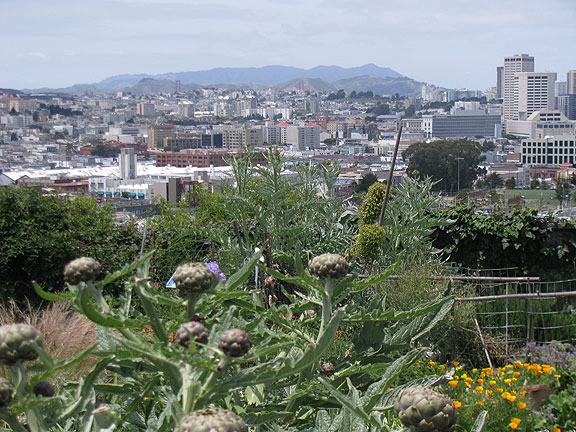
Artichokes soaking up the sun in the Potrero Hill Community Garden, with Mt. Tamalpais and the Golden Gate Bridge visible across San Francisco in the background.
Just yesterday I received by email newsletters from the Slow Food organization (“Slow Food vs. Fast Food” plus news items about this year’s stunted corn crop, the rise of urban farms, food safety in China, and the Farmers’ Market explosion) and Food Democracy Now (soliciting opinions on Obama’s Farm policy, a piece about GMOs and Organics—Coexistence or Contamination?, antitrust and fair market livestock rules, Food Stamp usage increase). On any given day one can find dozens of articles on food politics, agricultural ecology, food and climate change, food and energy, as well as the usual coverage of new restaurants, markets, and products. What seemed fresh and lively a mere five or six years ago is today’s tidal wave, drowning critical engagement in a wide river of noise and marketing. It’s almost as though our obsession with food is marching in lockstep with our expanding waist-lines, as we engorge ourselves with more than we can digest.
We just had a huge “Street Food Festival” outside the front of our house that filled Folsom from 22nd to 26th Street, sponsored by La Cocina, a neighboring nonprofit dedicated to incubating small food entrepreneurs into full-fledged businesses. (One of their better known success stories is Chac Mool, a food truck selling excellent Mayan dishes that has the only permit to park and sell food in Dolores Park.) It seems that all the efforts that have been germinating for the past few years to bring food to the front of our consciousness have been both successful and are at the same time notably failing too.
That’s because most of the food obsession is entirely compatible with the trendy, fad-driven marketplace, which has latched onto local, organic, heirloom, exotic, hand-made, et al as the most desirable acquisitions at this particular moment. So the Street Food Festival was a big hit, tens of thousands of attendees and all the food vendors doing huge business from morning to night last Saturday, August 20.
That doesn’t make it a bad thing. I like it when thousands of people occupy the streets, even if it is a eating-and-shopping festival. There’s a lot of milling about, hanging with friends talking and tasting, and a wonderful mixing of peoples. Adriana and other neighbors seemed a bit put off by the whole thing in the days leading up to it, but I have to say that it didn’t feel like a “yuppie invasion” to me. Lots of people 35 and under, but far from a super affluent-feeling scene.
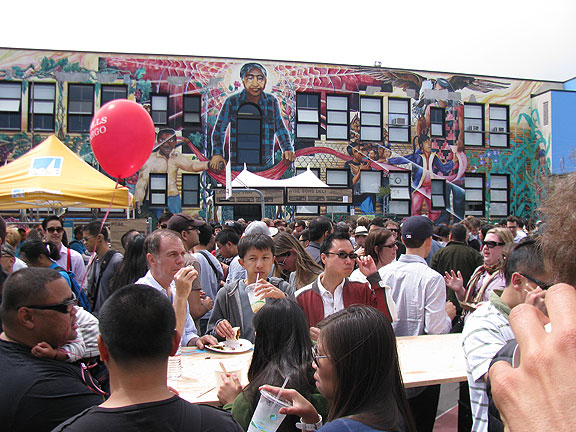
Eaters oblivious to the image of Cesar Chavez on the school's wall behind them... Chavez's United Farmworkers led the fight to ban DDT in the late 1960s, and made it a central issue for their grape boycott. Organizers speaking about it in parking lots of major supermarkets helped sensitize working-class and middle-class Americans to the problems of chemically-soaked food, in some ways setting the stage for the boom in organics that happened in the following years.
The Slow Food movement that started in Rome about twenty years ago as a repudiation of the McDonalds that had opened at the foot of the Spanish Steps has become a global phenomenon too, with a biannual gathering in Italy that draws over 30,000 farmers and artisan producers from around the world. To promote their goals of sustainable, traditional agricultural practices (and saving heirloom species) Slow Food embraced (and helped bring forth) today’s boutique food marketplace, recognizing before a lot of us that if you want farmers to keep various heirloom species and practices going (in this capitalist world), they have to be able to sell the products at a profit. Many people conflate this logic with an older “personal is political” idea that has floated down to us from feminism in the late 1960s-early 1970s, to conclude that by buying fancy, expensive foods we are “voting with our wallets” to help sustainable, local agriculture. Unfortunately, a lot of people seem to think this is all they need to do to contribute to social change!
In their beautiful new book “Urban Homesteading” my pals Rachel Kaplan and K. Ruby Blume address this drama in their chapter “Food is a Verb”:
…[The Slow Food and locavore] movements have been rightly criticized for their class politics, for advancing a laudable goal that is unattainable by many who might choose it if they could, and for consumption excesses that they justify as being local and “slow.” Their essential message, however, that food is an intimate reflection of our lives and culture, is not a class-based assertion but a human one. The appropriate class critique lies in the fact that not everyone can afford a Slow Food meal or the labyrinthine lifestyle of the locavore, but the drive towards localizing our food sources and reimagining our relationship with food can be shared with everyone. Generating local food sources in order to provide food security for everyone is part of the bigger story of the urban food revival currently underway.
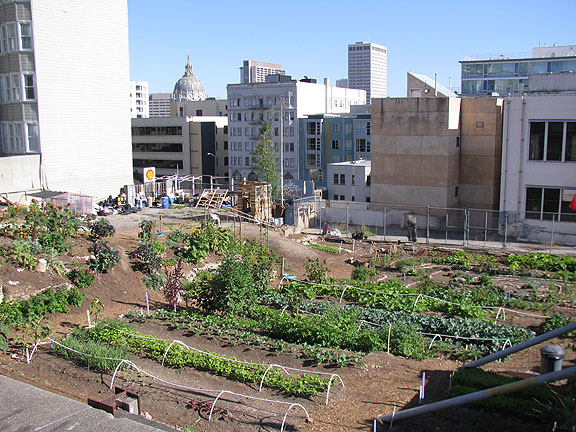
The Free Farm at Eddy and Gough, City Hall in the distance... the farmers here give all their produce away to locals and at the Free Farm Stand on 23rd an Treat every Sunday.
I’ve been excited about a new food politics for more than a decade, having been turned on to the Slow Food movement first in Switzerland and Italy by Mona Caron, and then uncovering the fascinating history of food politics as part of the ongoing Shaping San Francisco investigations into local history. In our “Ten Years That Shook the City: San Francisco 1968-78” we have a great essay by Pam Peirce (author of local gardening bible “Golden Gate Gardening”) called “A Personal History of the People’s Food System.” She describes how hard it was to find an organic vegetable when they started in the early 1970s, and that today’s burgeoning Farmers’ Markets, Whole Foods, and other organic markets all can be traced back to those early efforts 40 years ago.
I wrote about a lot of that history in Nowtopia, and I’m happy and proud to acknowledge that George McKay, whose excellent DIY Culture I quoted a few times in the book, has given me the honor of quoting Nowtopia in his newest book “Radical Gardening: Politics, Idealism & Rebellion in the Garden” (By George McKay, Frances Lincoln Limited Publishers, London: 2011). Radical Gardening is a fantastic, in-depth treatment of urban gardening and farming through time, with a particular focus on the UK where McKay is from. In England community gardens are referred to as allotments, dating back centuries and being a genuine artifact of social demands for land to grow food. George McKay dissects the history and practice of community gardens to show the subversive kernel still buried in the plots.
“Its anti-capitalism is most clear in two fundamental features of the allotment: firstly, the astonishingly low rents charged for plots by local authorities, which is a powerfully consistent rejection of spiraling urban land market values; secondly, the legislative fact that, by and large produce grown by allotmenteers cannot be sold commercially for profit. The standard treatment of a surplus or seasonal glut is to give it away: the allotment is predicated on a social and economic practice defined by, in David Crouch and Colin Ward’s term, ‘the gift relationship.’ In their view, an anarchistic ‘combination of self-help and mutual aid… characterizes the allotment world.’ Furthermore, it is a nationwide public socio-horticultural experiment that has endured and transformed itself for over a century, it is on the allotment, among the bean frames and sheds, the DIY glasshouses and the patchwork of dirty labour, that we should look for a quiet seasonal extremism… As Thomas Jellis puts it, today, for many allotmenteers, their earthy work-leisure
has come to express a tactical, grounded resistance to global capital and its negative environmental impact. Allotments and local foods can be seen as broader movements to re-localise and are often imagined as being in opposition to the conventional food system… Allotments are now also much more open, allowing women to sign-up and accepting people regardless of their nationality or background. This cultural multiplicity grants allotments resilience and durability, allowing them to adapt to change and disturbance.
- Allotments in Lancaster, England.
- Permaculture practitioner Michael Feinstein explains the basics to visitors at the Royate Hill Allotment in Bristol, England.
The community garden phenomenon in the U.S. has also been a site of what I like to see as working-class recomposition in this era of fragmentation and isolation. Immigrants and families from rural backgrounds find common ground to plant food and share skills across cultures and time. Urbanites long cut off from practical agricultural skills get their hands dirty, begin to reconnect to cycles of sun and water and season, and learn over time what grows and what doesn’t in their particular microclimate. For many gardeners, the politics is not front and center, and often barely present at all. Still, McKay aptly underlines the deeper meaning that emerges whether or not one is inclined to pursue it:
The degree of radicalism of guerrilla gardening as practiced in western cities may in the end be questionable, or easily qualifiable—its non-threatening nature going some way to explaining its popularity in our apparently post-ideological world. Yet we should recognize that today’s guerrilla gardening, whether drawing on its mary-meadowing tradition or anti-capitalist rhetoric, is one of those apparently single-issue movements which can actually touch a multitude of contemporary questions: land ownership and access, food production and consumption, biotechnology, the environment, sustainability, slowness and modernity, grassroots politics and empowerment… p. 192
I loved how Radical Gardening, a $20 paperback, takes advantage of new printing technology to include color images throughout the book. It’s a gorgeous, highly readable, and very provocative contribution to the emergent political opposition to 21st century global capitalism. As he concludes, “This book has aimed to be a small corrective to the parochial or suburban or landed versions of garden understanding, to trace strands of idealism, rebellion, political action and social criticism in the garden historically and presently.”
Much more of a how-to book is Rachel and Ruby’s “Urban Homesteading: Heirloom Skills for Sustainable Living”. It’s a big trade paperback, nearly a coffee table book in its elegant design and ample color photographs throughout. As Peter Bane writing in the latest issue of Permaculture Activist (“Hidden Connections in the Garden” is the theme of issue 81, their latest, highly recommended) describes it in his review:
“Scattered among the eye candy of seed collections, farmers markets, and romanesco broccoli is a series of Get-Going sidebars, call them to-do lists for a new society: How to Start a Community Garden in 12 easy steps, How to Get to Zero Waste in 60 months… These contain many good ideas, as much advocacy as action… In fact, there are so many side-tracks in this book that it could be argued the main stream has disappeared into an estuary of rich detail.”
Bane also points out usefully that since they have grounded their book in the examples that abound here in the Bay Area, “the world portrayed here knows nothing of winter and little of North American summers. Talk of conserving 90% of electrical energy won’t go far with people living in less privileged regions.” I would prefer he use the term ‘lucky’ rather than ‘privileged’ since the latter implies someone has been given something that they shouldn’t have (or taken it at others’ expense perhaps). But his point is well-taken, that all too much of our experiments and postulations for a post-capitalist and post-fossil fuel life don’t face up to the gnarly industrial problems that complex societies will face. Sustaining anything close to the comfort and convenience of our current world is not going to be possible unless we apply the whole systems, regenerative thinking that is so well applied to urban homesteading in this volume, to larger industrial systems too. Not that Rachel and Ruby are at fault for not doing so, since that is clearly beyond the scope of their excellent book, which already DOES include an incredible range of practical information and intelligent politics.
From the beginning, they embrace the Do-It-Yourself (DIY) culture that George McKay wrote about in his book about 1990s Britain, and I integrated into all my case studies in Nowtopia too.
DIY is an alternative culture strategy that helps us thrive outside the confines of the capitalist machine. It is an ethic of curiosity, exploration, and empowerment that can be applied to many aspects of our lies—growing food, sewing clothes, creating homegrown entertainment, writing books, fermenting vegetables, educating children. It feels good to do it yourself. This is a sane way to reorient our living toward a more just and equitable distribution of limited natural resources, and it supports the goal of sustainability through a maximum reduction in consumption and an expansion of creativity, and personal and community empowerment. (p. 14-15)
Mainstream culture in the U.S. has recently woken up to the demise of practical skills. The Soul of Shopcraft is a recent bestselling book about a hi-tech professional abandoning his career to rediscover the joys of working slowly and with his hands. Ruby is one of the most practical-skilled people I know, having built the huge puppets that came to decorate so many political demonstrations over the past 20 years, to more recently founding the Institute of Urban Homesteading out of her Oakland home. She renovated the place largely herself, doing everything from carpentry to plumbing. Now she has a thriving kitchen garden, keeps bees, makes cheese, jams, mead, and raises and slaughters rabbits, all while running her institute that provides over 60 classes per season in the same skills. Here she and Rachel make their pitch for the new homesteading:
It is important for each of us to have a physical skill that is satisfying as well as sustaining—knitting, or sewing or blacksmithing or canning or gardening. A “can do” attitude about all the activities people mastered as a matter of course in the past is required… Many of the solutions in this book are simple, affordable, transportable, and good to do with others. Homesteading practices are not about austerity or apocalypse; they’re about living a simpler, more joyful, more effective life. Homesteading is not a replay of a Depression-era mentality. It is a series of skills and practices that lift us out of a culture of inaction and cynicism and into a culture of abundance, care, and possibility.
I don’t have a garden. When I was offered a plot two years ago at a community garden about 12 blocks away, I declined, realizing that I would not be disciplined enough to keep it up. I think I’d like to garden in my backyard, but we don’t have access to it. So for now, I’m a cook, an avid Farmers’ Market shopper, and an enthusiastic proponent of community gardens. I might try canning and pickling soon. It’s always a time issue—do I pass on reading that book or magazine in favor of several hours in the kitchen? Do I forego that walk or bike ride to prepare food? Urban Homesteading and the Permaculture Activist both give me all I need to take the plunge. One of these days I will!…
P.S. Forgot to plug this important article called “Who Will Feed the People?” by Kollibri terre Sonnenblume over at Counterpunch. The author is a farmer in Oregon’s Willamette Valley and partners with two others to work seven acres, but used to be a veteran of urban farming in Portland. He raises a number of vitally important issues confronting the positivity that prevails among urban gardeners and new farming advocates, which are fully fleshed out in his piece, but the list is
1. Not enough farmers
2. Lack of equipment for small scale farming
3. Lack of knowledge about small scale farming
4. Lack of financial resources
5. Lack of market
6. The wasteland left behind by conventional farming
7. Extreme weather
8. Social challenges:
“Sometimes when I’m out there in the field doing repetitive and arduous by hand because there’s no other way to do it (sometimes because that’s just how it’s done and always has been done), I find myself wondering, “How do people think we are going to switch from conventional to ‘sustainable’ agriculture?” The on-the-ground facts paint a picture of mind-boggling challenges, tangled (by nature) logistics, steep learning curves, tremendous labor, and radical lifestyle change for which no one seems ready.”
I think the arguments of the permaculturists and urban homesteaders DO answer some of his important criticisms, but we’d all do well to read this and think hard about the huge challenges we face together.

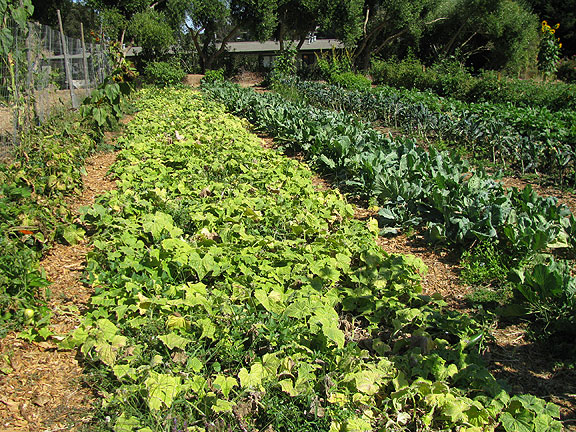
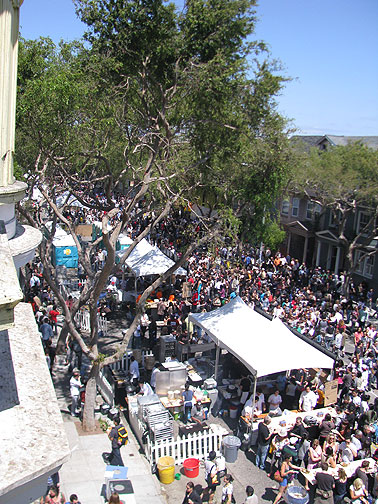
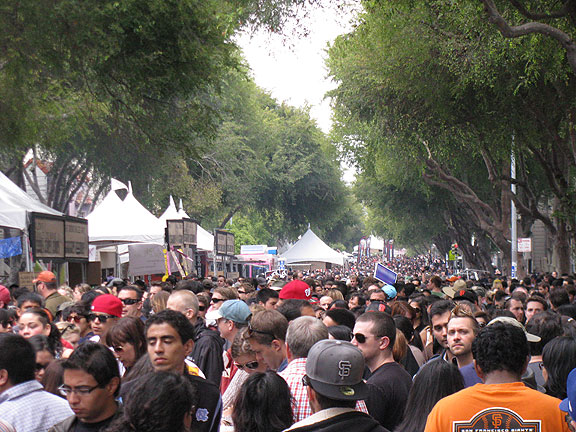
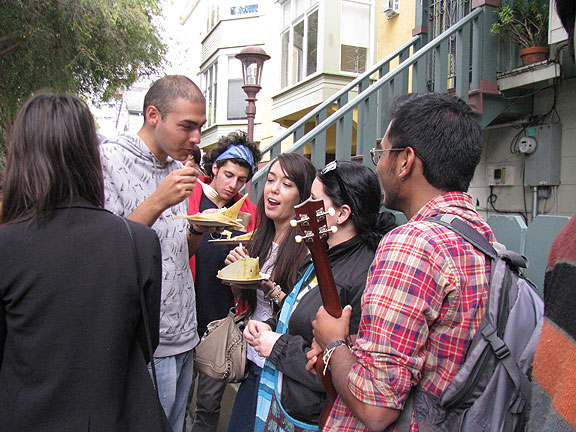
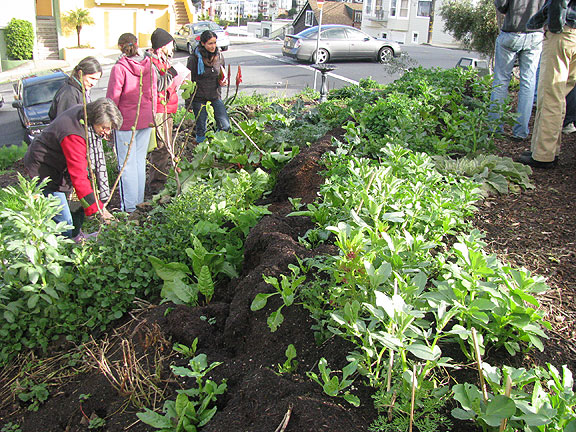
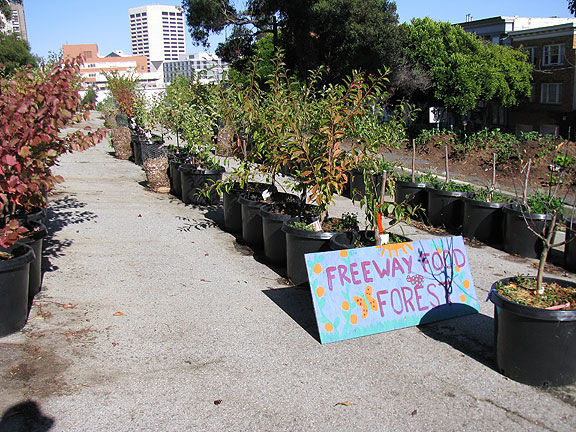
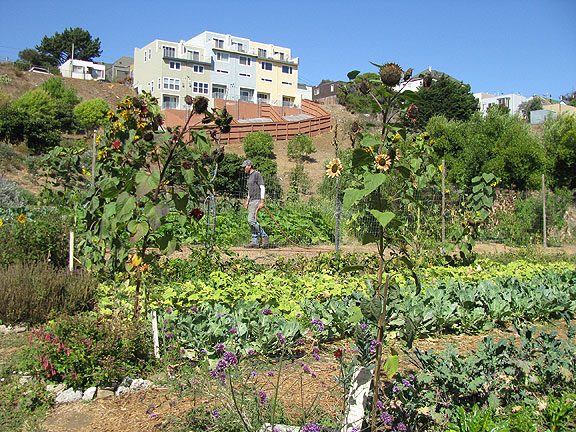
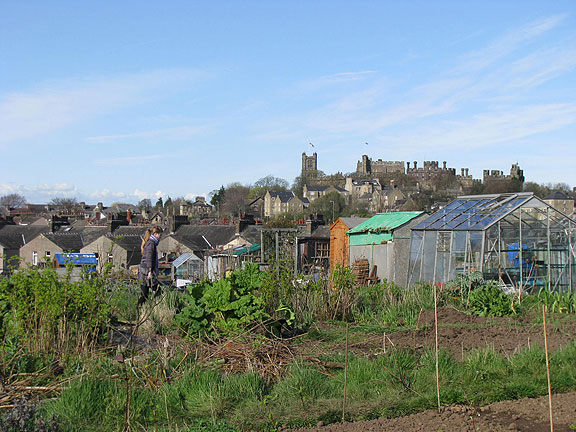
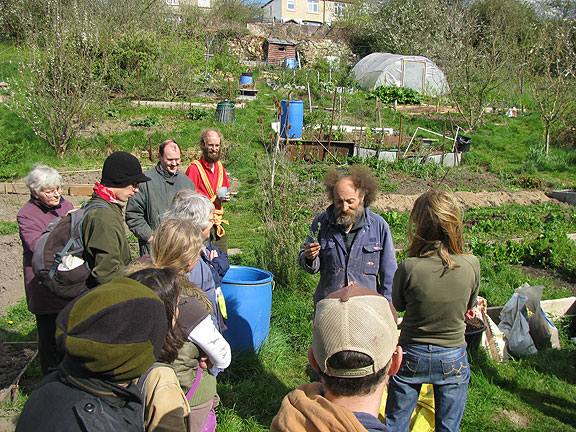
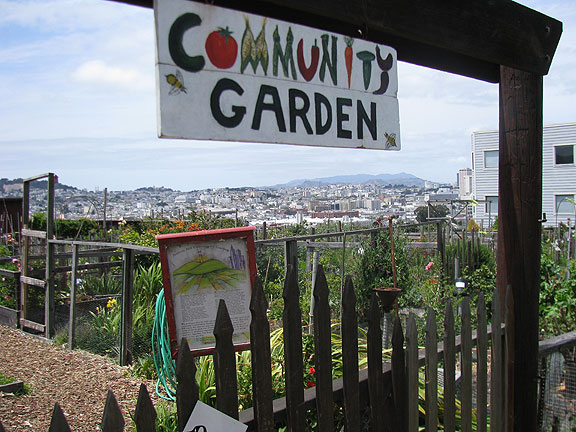











love your website. I share a similar political vein, philosophy, and geography of the city. It’s important to me that there are people out there who are just as passionate about finding the beauty and utopia in the world we live in, now. The more people share and advocate, the more beauty we can bring to the world. Thanks.
Loved this article and great to see Bristols allotments, as that is where I live. I have also read George Mckays new book and really liked it. I believe that food is essential to retaining the ability to opt out of the dominant economic system, and the more people do this the more that we self organise and move towards our own sustainability the more we regain power over our lifes. We have just posted up some interesting talks on transistions movements in UK which you might find interesting and tie into these issues and concerns.
http://www.permanentculturenow.com/2011/09/02/resilience-debate-from-off-grid-festival/
http://www.permanentculturenow.com/2011/09/19/transition-uk-talk-by-rob-hopkins-at-sunrise-off-grid-festival-2011/
Fine rejoinder – you’ve certainly got a right to your more optimistic views, but in trying to understand the “whole systems” of social reality, I just don’t get that imperative – but that is for me to live out, with some amount of joy and fun in seeing a mess of dead-ends and a lot of green wishfulness that cannot go much of anywhere – but we are here to enjoy the entirety, the good life along with the massive crack-ups. Thanks for your fine work, as always.
yeah, that IS what comments are for, I guess!… thanks!… but you know, the hopeless cul-de-sac that lies behind your comment, wrapping itself in know-it-all realism, is just despair in other clothes… I’m sorry your main point is despair. I don’t share it. I actually DO think we can get out of this mess, but certainly not without trying!… and for sure lots of mistakes and wrong paths will be taken in that effort (presuming we ever start to actually make it!)…
anyway… hope you’re enjoying your time on the planet, in spite of the despair…. we only get one time ’round, apparently…
This seems to me like TED talk:
“Sustaining anything close to the comfort and convenience of our current world is not going to be possible unless we apply the whole systems, regenerative thinking that is so well applied to urban homesteading in this volume, to larger industrial systems too.”
We can “apply” all the “thinking” we want, but the large industrial systems are far too large and embedded in fossil fuel supply systems for pie-in-the-sky or rutabuaga-in-the-sidewalk kind of green messianic charlatanism. Talking green, living brownish – that’s about where we, the collective human race, stand at even the earthy-crunch edge.
Once again I’m here to wreck the mellow vibe, but that’s what comments sections are for.
Chris, thank you for the kind words about my new book, Radical Gardening. And yes I loved the fact that you sourced an image of allotments in Lancaster, Lancashire–my home town! George
sure, quite a few… they’re listed at the top in the masthead, and you can also peruse the categories at left…
–cc
I like to visit your site a couple times a week for new thoughts. I was wondering if you have any other niches you write about?